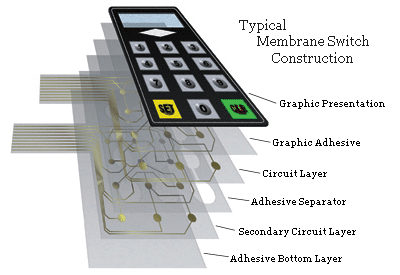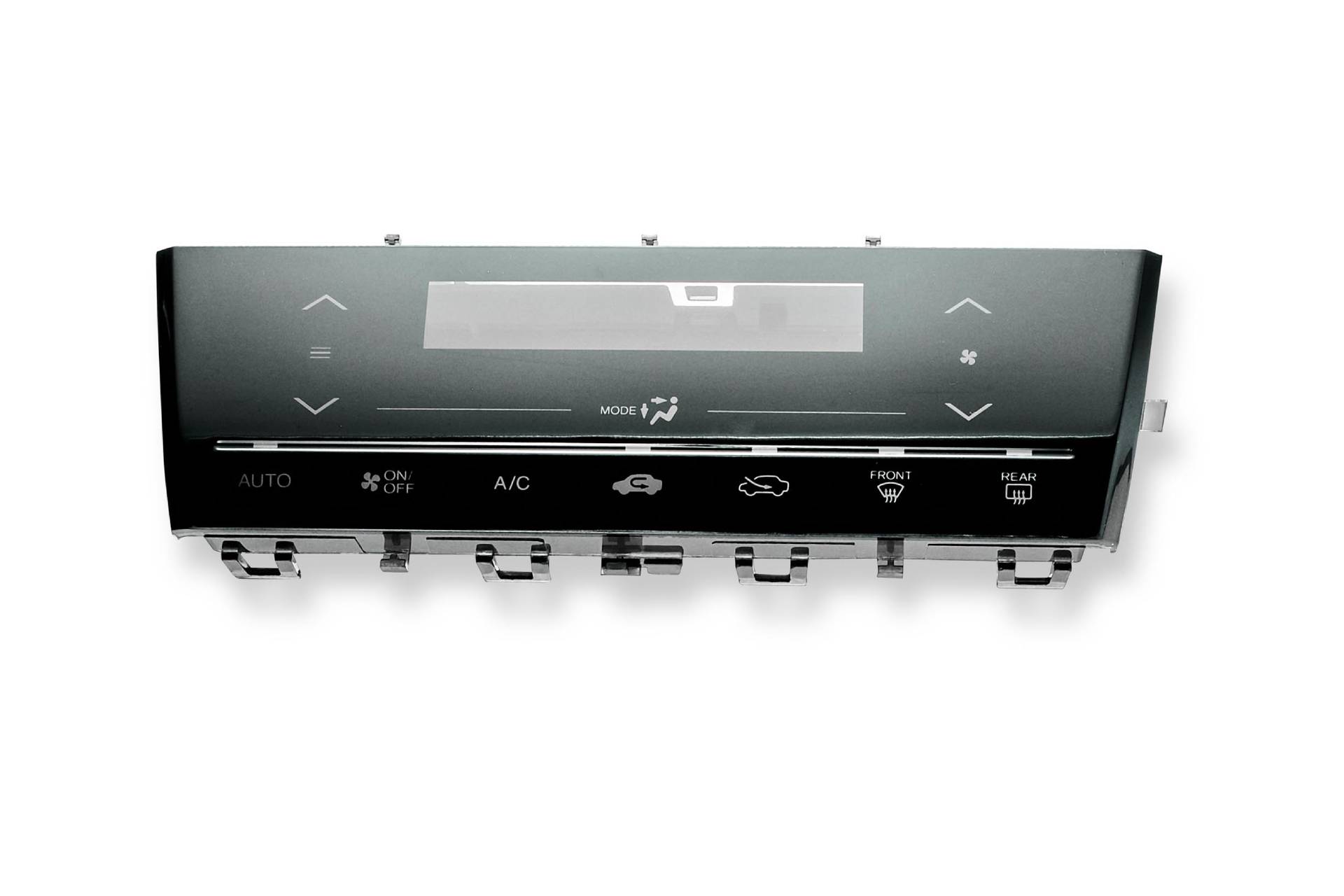Everything About Membrane Layer Switch Over: Comprehending Its Layout and Performance
When you assume regarding the control interfaces in modern tools, membrane layer switches frequently come to mind. These parts are greater than simply switches; they blend style and performance effortlessly. Understanding exactly how they work and what makes them efficient can alter your point of view on daily electronics. There are nuances to their design and efficiency that you might not be mindful of. Let's explore what collections membrane switches over apart from various other control systems.
What Are Membrane Layer Buttons?

Their seamless nature makes them very easy to clean and immune to dirt and wetness, a vital attribute in numerous settings. Membrane layer buttons can likewise be personalized regarding form, size, and graphics, allowing producers to develop one-of-a-kind interfaces customized to particular products. Plus, they're light-weight and thin, which aids in decreasing the total bulk of devices. In general, membrane layer buttons play a substantial function in boosting customer experience across a large selection of applications.
Exactly How Membrane Layer Switches Over Job
When you press a key on a membrane layer switch, it activates an uncomplicated yet reliable system. membrane switch manufacturer. The top layer, frequently made of flexible material, pushes down onto a conductive layer under it.
You'll observe that the responsive responses varies based on the button design, supplying either a soft click or an extra pronounced action. As soon as you release the secret, the membrane go back to its original setting, resuming the circuit and quiting the signal. This process takes place practically immediately, guaranteeing a receptive user experience.
Membrane layer buttons are preferred due to their durability and resistance to dirt and moisture, making them optimal for numerous applications, from household home appliances to clinical gadgets. Understanding this procedure helps you appreciate their widespread use.
Secret Elements of Membrane Layer Switches
Recognizing the key components of membrane switches is essential for understanding their functionality and design. At the core, you'll find the graphic overlay, which supplies the aesthetic interface for users. Under that, there's a spacer layer that separates the circuit layers, ensuring that they don't make contact till pressed. The circuit layer is where the magic happens; it includes conductive traces that finish the circuit when you press the switch. Another important component is the glue support, permitting the button to comply with surface areas safely. Ultimately, the safety layer shields against environmental elements and wear, extending the button's life-span. Each component plays a substantial role in ensuring dependable efficiency and user interaction. By comprehending these elements, you'll gain understanding into exactly how membrane layer changes operate and their relevance in numerous applications.
Products Used in Membrane Layer Switch Style
The performance and resilience of membrane layer switches greatly depend on the products used in their style. You generally run into polyester and polycarbonate as primary substratums because of their superb strength and adaptability. These products withstand scrapes and chemicals, making them optimal for requiring environments.
The conductive layers usually utilize silver or carbon, chosen for their dependability and conductivity. membrane switch manufacturer. Silver provides remarkable performance, while carbon is a cost-effective option. For the overlay, you could consider a matte or glossy finish, depending on your visual requirements and customer experience
Adhesives play a vital role also; they bond layers safely and assure longevity. Make specific to select adhesives that endure environmental aspects like temperature level and moisture. Finally, do not overlook the importance of an excellent printing strategy for graphics, as it enhances both performance and aesthetic allure. Selecting the ideal materials will assure your membrane layer button stands the examination of time.
Style Factors To Consider for Membrane Layer Buttons
While making membrane layer buttons, it's essential to consider different aspects that influence their performance and customer experience. Begin by concentrating on the layout and switch dimension; ensure they're intuitive and simple to navigate. Take into consideration the tactile responses you desire to supply-- will individuals need a noticeable click or a softer touch? Additionally, think of the materials you'll make use of, as they'll affect toughness and looks.
Don't ignore the visuals design; clear labeling and color contrast are significant for exposure. Validate your design accommodates ecological factors, like wetness or temperature level variants, which could impact efficiency. Bear in mind the relevance of testing models with actual individuals to collect responses and make necessary modifications. This repetitive procedure helps you refine the design, confirming it meets both useful and visual requirements successfully. By meticulously thinking about these aspects, you'll develop a membrane layer switch that enhances use and contentment.
Applications of Membrane Buttons
Membrane layer switches are versatile elements discovered More Bonuses in different applications, from industrial equipment to customer electronics. You'll see their impact in machines that call for sturdy user interfaces and in gadgets that gain from streamlined styles. Comprehending these applications assists you appreciate the functionality and functionality of membrane layer buttons in everyday modern technology.
Industrial Devices Use
When you're looking to boost the functionality of industrial equipment, membrane layer buttons supply a trusted service that integrates resilience with straightforward design. These these details switches are perfect for rough environments, giving resistance to dust, wetness, and chemicals. Welcome membrane buttons to enhance your operations and improve overall performance.
Consumer Electronics Assimilation
In the domain of consumer electronics, membrane buttons play a vital duty in boosting individual communication and tool performance. You'll locate them in tools like microwaves, remote controls, and video gaming consoles, supplying a seamless way to interact with modern technology. Their streamlined design allows for simple combination right into different items, making controls instinctive and straightforward. With their capacity to include graphics and backlighting, you can appreciate a modern-day aesthetic that enhances the tool's total appearance. Membrane buttons additionally guarantee resilience and resistance to dust and moisture, expanding the life expectancy of your electronic devices. By selecting membrane switches, you boost not simply the performance however also the design of your tools, making everyday interactions smooth and satisfying.
Advantages and Negative Aspects of Membrane Layer Switches
While membrane switches use a range of benefits, they also come with some disadvantages that you need to consider. One considerable advantage is their portable design, making them optimal for space-constrained applications.

Membrane switches can have a shorter lifespan contrasted to mechanical buttons, especially under heavy use. They can also be much less tactile, which might affect customer responses throughout operation. Stabilizing these pros and cons will certainly assist you identify if membrane switches are the ideal fit for your project.
Regularly Asked Concerns
For How Long Do Membrane Layer Changes Generally Last?
Membrane layer changes usually last between 5 to ten years, depending on use and ecological conditions. You'll intend to examine elements like wear, exposure to moisture, find and temperature changes to gauge their durability efficiently.
Can Membrane Layer Changes Be Personalized for Particular Layouts?
Yes, you can customize membrane layer buttons to fit specific designs (membrane switch manufacturer). You'll have the freedom to choose shades, forms, and layouts that match your project's requirements, guaranteeing they mix flawlessly with your total aesthetic
What Is the Expense Array for Membrane Layer Switch Manufacturing?
The cost array for membrane layer switch production typically falls in between $1 and $10 each, depending on aspects like layout complexity, amount, and products. You can get quotes from producers to discover the ideal alternative.

Are Membrane Layer Switches Water Resistant or Immune?
Membrane switches can be created to be water-proof or immune, relying on materials utilized and construction approaches. If you require them for wet atmospheres, guarantee you define those requirements during the design process.
How Do Membrane Switches Compare to Traditional Switches?
Membrane switches are generally thinner and more adaptable than typical switches, providing a streamlined layout. They're usually less complicated to clean up and integrate, however may not give the responsive responses you're used to with mechanical options.
Conclusion

Comments on “Don’t ignore the value of working with a proven membrane switch manufacturer for prototypes.”